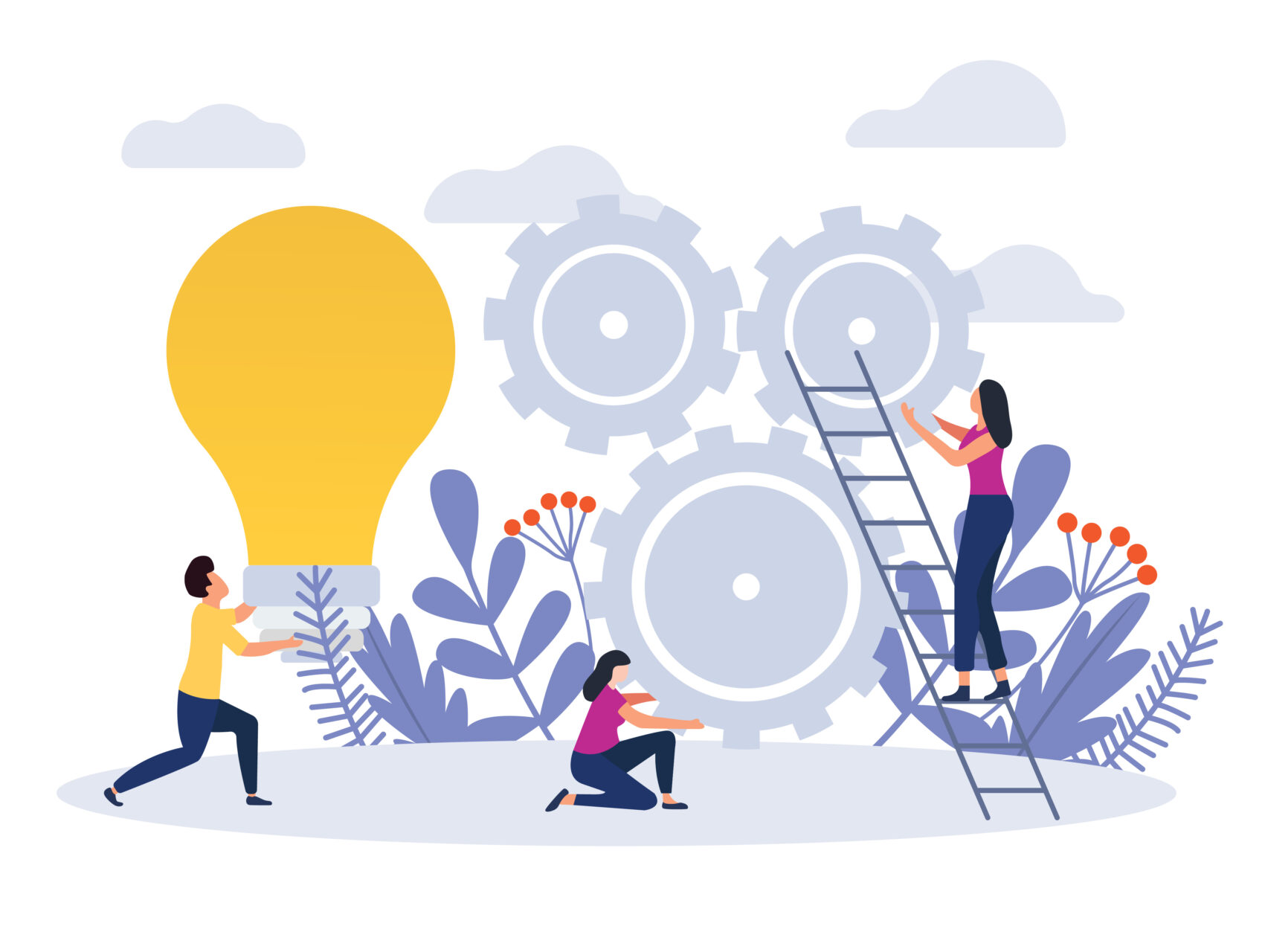The complexity of today’s world and the challenges we face due to constant disruption require innovative solutions. But innovation is more than generating new ideas and products: It also means knowing how to harness disruption to provide a competitive advantage.
The rise of automation and artificial intelligence are timely examples of a disruption that innovation-enabled organizations can harness to differentiate themselves from competitors. Those that embrace automation and AI will likely thrive, and those who don’t will struggle. The learning and development space is no different.
“Learning and innovation go hand in hand. The arrogance of success is to think that what you did yesterday will be sufficient for tomorrow.” – William Pollard.
High-impact learning organizations should work toward cultivating innovation as a capability across their organization; this means developing innovation as both a mindset and a skill set. The key to success is to ensure your organization’s approach to implementing an innovation strategy is systemic, systematic, sustainable and — most importantly — human-centric.
Critical characteristics of your innovation approach
Developing innovation as a capability is what makes businesses stand out from one another. Innovation provides a competitive edge in today’s ever-evolving business landscape by enhancing a company’s ability to adapt and respond to changing customer needs. It also fosters efficiency and productivity, and helps to attract and retain top talent.
All of these elements compound over time to develop truly innovative cultures. To develop innovation as a capability at your organization, ensure your approach includes the following elements.
Human-centricity
By its very nature, innovation is human-centric. Whether creating a business model or integrating AI into your customer experience, innovation is centered on improving the human condition. By solving problems and addressing user needs, we can enhance people’s quality of life.
Because innovation is inherently human-centric, innovation strategies must be, too. Successful innovation strategies involve:
- Identifying challenges that ultimately connect to a human problem, or opportunities to do something faster, cheaper or in a new way that was not previously possible.
- Understanding stakeholder wants, needs and pain points related to the human problem.
- Applying creativity and ideation — both of which are uniquely human.
- Adapting and adopting, which differentiates innovation from mere invention.
- Recognizing, carefully, the ethical, societal and environmental impacts of new products and services.
Innovation is not just driven by what is possible but by what will be helpful for people. This is why innovation strategies revolve around consistently considering human needs.
The 3 Ss
To thrive, organizations must develop innovation as a capability so that it permeates everyday processes and becomes ingrained in the culture. This means your innovation approach must be systemic, systematic and sustainable.
- Systemic: As an organizational capability, innovation is not an isolated event. It is a continuous priority that runs through the organization. A systemic approach to innovation means the organization has a culture in which creativity, collaboration, experimentation and learning from failure are encouraged and standard expectations.
- Systematic: Although inspiration is sometimes experienced as a spontaneous or random flash of genius, innovation is anything but random. If innovation is to become a capability in your organization, you must follow a repeatable process that can be enabled, managed and measured. You must develop both mindsets and skills in your employees to integrate innovation into their everyday work effectively.
- Sustainable: For an organization’s innovation strategy to lend a competitive advantage, the strategy needs to be something you can sustain over time. Too often, organizations implement a brief innovation campaign without doing the work needed to make it part of their everyday activities.
Developing innovation as a set of skills
One of the most common myths about innovation is that it cannot be taught or learned; you either are or are not innovative. Another myth is that innovation is a singular skill, not a set of skills. But innovation is more than simply generating brilliant ideas — innovation is a collection of skills that can be developed, refined, coached and even measured.
Developing the following skills across your organization can help create innovative individuals who contribute to your culture.
Curiosity and creativity
Curiosity sparks innovation. As a skill, curiosity means establishing behaviors that question the status quo by effectively asking questions like why, why not and what if. Curiosity means being open to diverse perspectives and becoming comfortable with the risks and discomforts of change.
Creativity is intimately related to curiosity but unique and valuable in its own way. Creativity is the ability to generate new and unique ideas. As a skill, this includes utilizing techniques to promote divergent thinking and explore multiple possibilities while resisting the urge to settle on a single idea too quickly. Creativity also includes developing one’s imagination — the ability to concretely visualize what can be versus what is.
Critical thinking and problem solving
Problem solving is often the catalyst for innovation, as identifying and resolving problems can lead to developing new ideas and processes. Critical thinking is equally as crucial in the innovation process because you must be able to analyze the problem being addressed. Critical thinking is needed to explore underlying issues and root causes, clarify the gaps between the current and desired states, analyze risks and rewards and evaluate the outcomes of experimentation and prototyping.
Collaboration
Innovation doesn’t happen in isolation. It occurs when humans come together and collaborate, which can happen at many levels. As a skill, this means working effectively with others, communicating clearly, embracing a range of perspectives and maintaining robust knowledge-sharing capabilities, whatever that looks like for your organization.
Resilience and adaptability
Resilience and adaptability are two skills necessary to navigate the inherent failures that come along with innovative cultures. Resilience — the ability to cope with setbacks — ensures you can continue despite perceived failure. On the other hand, adaptability is necessary to ebb and flow with the ongoing waves of change experienced in cultures of continuous innovation.
Innovation centers as the source of skill building
Creating an innovation center is one powerful way organizations can pursue building innovative skills in their people and show their commitment to building innovation as a capability.
Innovation centers can also help organizations stay competitive in an increasingly complex and fast-paced world. Organizations can deeply foster a culture of creativity, experimentation and continuous improvement by providing a dedicated space for innovation.
The core functions of an innovation center are to:
- Define the importance of innovation: It’s essential to clearly articulate why the organization is establishing an innovation center and its goals. Common reasons are to develop new products, improve existing processes or foster a culture of innovation throughout the organization.
- Display a commitment from leadership: An innovation center is a tangible commitment from leadership. However, establishing it is not enough. Leaders must reinforce the importance of innovation and continuously invest in the center through funding, supporting its activities and generally endorsing a culture of innovation through everyday actions. Leadership support can help overcome obstacles and ensure long-term sustainability.
- Provide access to necessary resources: Resources should be available to all employees through the innovation center. They may include physical resources, like space and equipment, and human resources. Staff members with diverse skills and backgrounds can bring different perspectives to the innovation center, encouraging creative thinking and innovative problem-solving.
- Enable innovation as a repeatable process: A structured, repeatable innovation process is fundamental and can ensure that ideas are effectively developed and implemented. The innovation center should be dedicated to a process that gives structure to the exploration of new ideas, experimentation, defining challenges, collecting evidence on the viability of prototypes and more.
- Reinforce and foster a culture of innovation: Creating an innovation center isn’t just about setting up a space and providing resources; it’s about fostering a culture of innovation. Doing this can involve encouraging risk-taking, promoting collaboration and celebrating successes and failures. It also involves creating a safe space where employees feel comfortable expressing their ideas without fear of judgment or criticism.
- Build skills and offer development opportunities: The innovation center can help foster a continuous culture of innovation by equipping employees with the skills they need to innovate and should provide development opportunities to help employees improve their innovation skills, which can involve workshops, courses, mentoring programs and more.
- Measure to prove and improve: Once the center is up and running, it’s essential to evaluate its effectiveness and regularly adjust. This might involve tracking the number of ideas generated, the success of implemented ideas or employee feedback. Regular evaluation can ensure the center continues to foster innovation and provide value to the organization.
Cultivate competitive advantage by tapping into your innovative potential
Innovation is crucial to an organization’s ability to build its competitive advantage and flourish in an environment of ever-increasing disruptions. Innovation as an organizational capability is also tied directly to an organization’s ability to nurture and cultivate a core set of mindsets and skill sets across its workforce.
Reflect on the role of innovation in your organization. How does your organization prioritize the development of the skill sets? Does it create a space and time for innovation? How does your leadership communicate the organization’s vision and expectations of innovation?
Organizations that invest in innovation will be more agile, resilient and better equipped to compete now and in the future.















